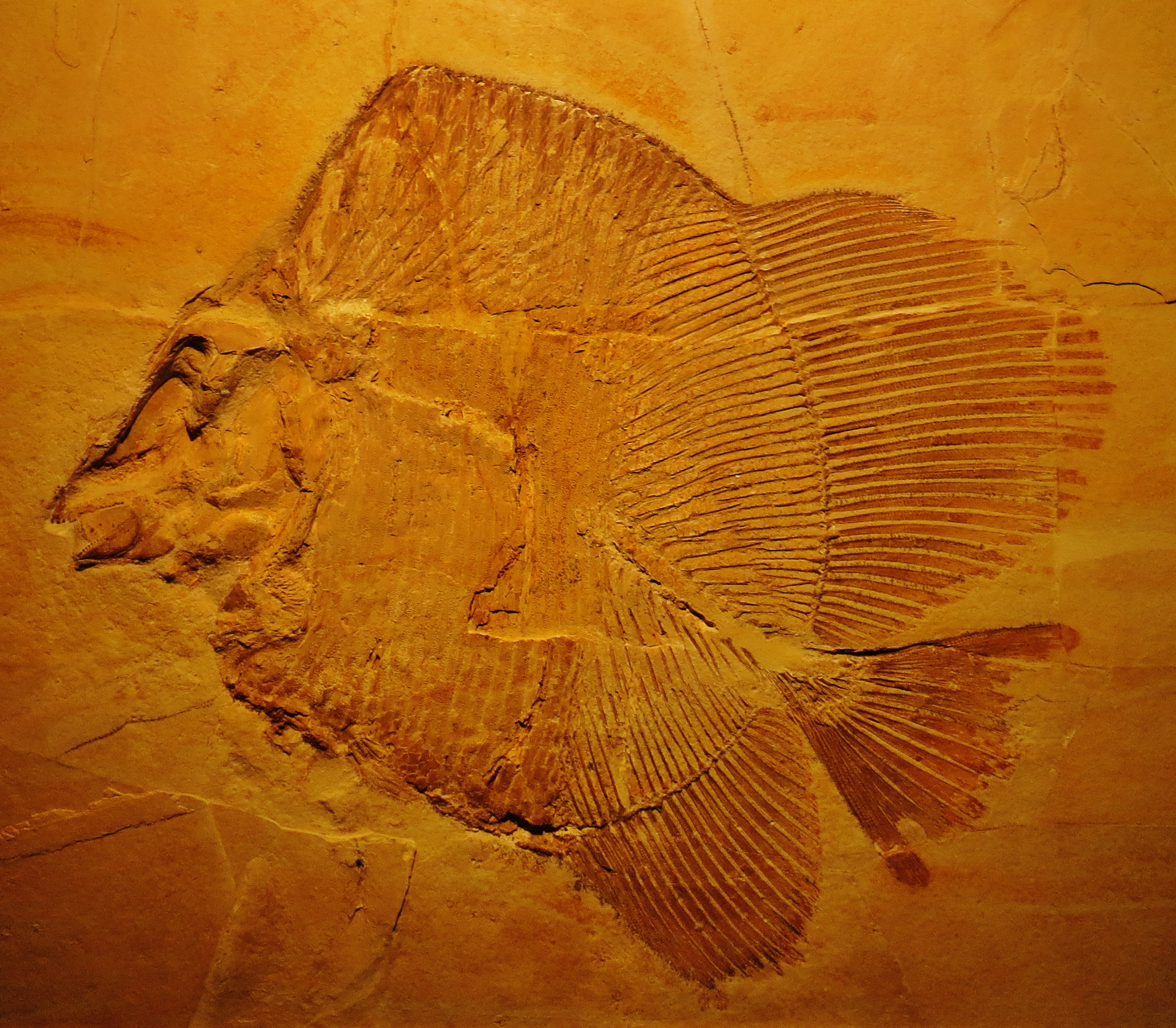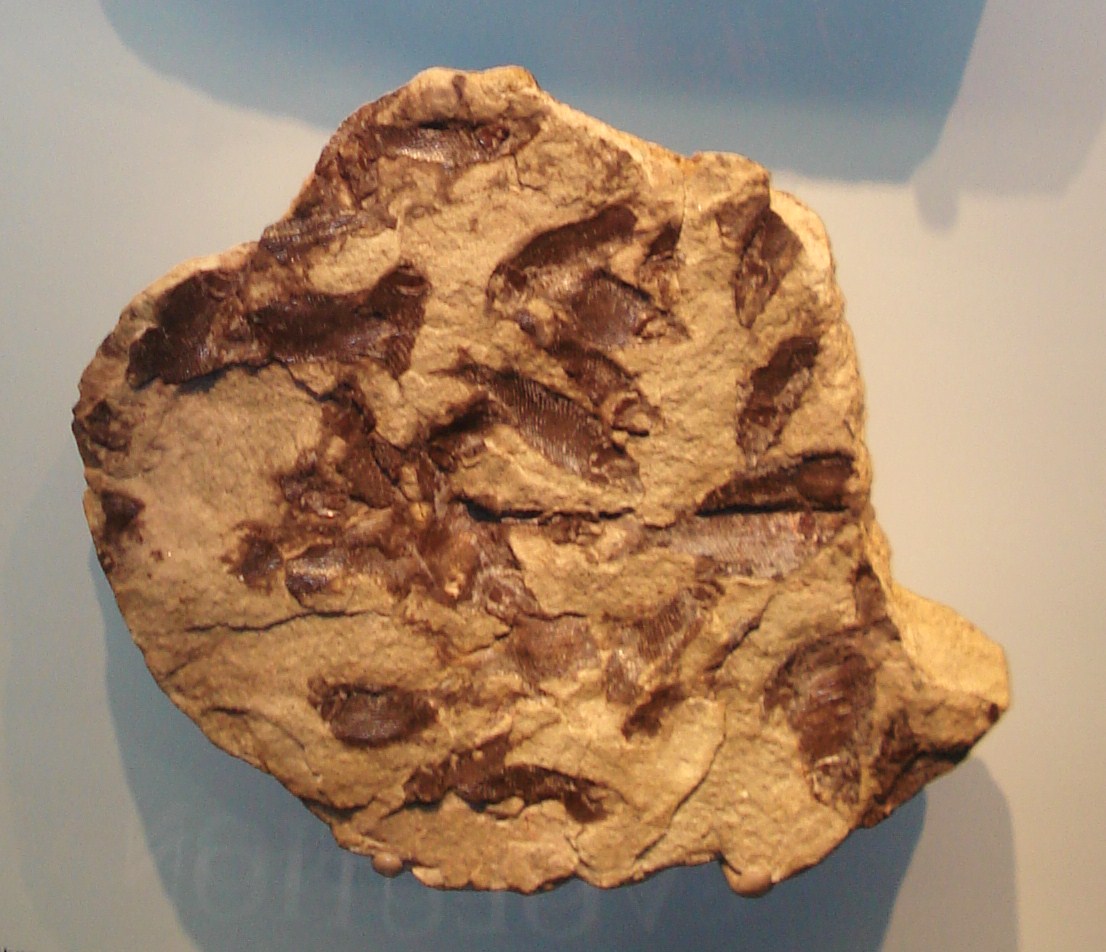|
Semionotiformes
Semionotiformes is an order of ray-finned fish known from the Middle Triassic (Anisian) to the Late Cretaceous (Maastrichtian). Their closest living relatives are gars (Lepisosteidae), with both groups belonging to the clade Ginglymodi within the Holostei. The group includes both freshwater (Semionotidae) and marine (Callipurbeckiidae, Macrosemiidae) adapted forms. Many members of the family Macrosemiidae (which are usually included in Semionotiformes but sometimes placed in their order), had elongated dorsal fins, often associated with an adjacent area of skin which was free of scales. These fins were likely undulated for use in precision swimming. The body morphology of macrosemiids suggests that they were slow swimmers who were capable of maneuvering around complex topography, such as reef environments. Classification * Order †Semionotiformes Arambourg & Bertin 1958 sensu López-Arbarello 2012 ** Genus ?†'' Orthurus'' Kner 1866 ** Genus †'' Sangiorgioichthys'' Tintori ... [...More Info...] [...Related Items...] OR: [Wikipedia] [Google] [Baidu] |
Ginglymodi
Ginglymodi is a clade of ray-finned fish containing modern-day gars (Lepisosteidae) and their extinct relatives (including the family (biology), family Lepidotidae) in the Order (biology), order Lepisosteiformes, the extinct orders Semionotiformes and Kyphosichthyiformes, and various other extinct taxa. Ginglymodi is one of the two major subgroups of the infraclass Holostei, the other one being Halecomorphi, which contains the bowfin and eyespot bowfin and their fossil relatives. Fossil record The fossil record of ginglymodians goes back at least to the Anisian stage (geology), stage of the Triassic period (geology), period, over 240 million years ago. ''Eosemionotus'' is one of the earliest ginglymodians. ''Acentrophorus'', another taxon from the Middle and Late Permian, and ''Paracentrophorus'' from the Early Triassic epoch (geology), epoch, could be even earlier members of the group. Ginglymodi was biodiversity, diverse and widespread during the Mesozoic era (geology), era, bu ... [...More Info...] [...Related Items...] OR: [Wikipedia] [Google] [Baidu] |
Callipurbeckiidae
Semionotiformes is an order of ray-finned fish known from the Middle Triassic (Anisian) to the Late Cretaceous (Maastrichtian). Their closest living relatives are gars (Lepisosteidae), with both groups belonging to the clade Ginglymodi within the Holostei. The group includes both freshwater (Semionotidae) and marine (Callipurbeckiidae, Macrosemiidae) adapted forms. Many members of the family Macrosemiidae (which are usually included in Semionotiformes but sometimes placed in their order), had elongated dorsal fins, often associated with an adjacent area of skin which was free of scales. These fins were likely undulated for use in precision swimming. The body morphology of macrosemiids suggests that they were slow swimmers who were capable of maneuvering around complex topography, such as reef environments. Classification * Order †Semionotiformes Arambourg & Bertin 1958 sensu López-Arbarello 2012 ** Genus ?†'' Orthurus'' Kner 1866 ** Genus †'' Sangiorgioichthys'' Tintori ... [...More Info...] [...Related Items...] OR: [Wikipedia] [Google] [Baidu] |
Holostei
Holostei is a group of ray-finned bony fish. It is divided into two major clades, the Halecomorphi, represented by the single living genus, '' Amia'' with two species, the bowfins (''Amia calva'' and '' Amia ocellicauda''), as well as the Ginglymodi, the sole living representatives being the gars (Lepisosteidae), represented by seven living species in two genera ('' Atractosteus'', '' Lepisosteus''). The earliest members of the clade, which are putative " semionotiforms" such as '' Acentrophorus'' and '' Archaeolepidotus'', are known from the Middle to Late Permian and are among the earliest known neopterygians. Holostei was thought to be regarded as paraphyletic. However, a recent study provided evidence that the Holostei are the closest living relatives of the Teleostei, both within the Neopterygii. This was found from the morphology of the Holostei, for example presence of a paired vomer. Holosteans are closer to teleosts than are the chondrosteans, the other group ... [...More Info...] [...Related Items...] OR: [Wikipedia] [Google] [Baidu] |
Macrosemimimus Fegerti
''Macrosemimimus'' is an extinct genus of semionotiform ray-finned fish from the Late Jurassic of Germany, England and France France, officially the French Republic, is a country located primarily in Western Europe. Overseas France, Its overseas regions and territories include French Guiana in South America, Saint Pierre and Miquelon in the Atlantic Ocean#North Atlan .... References Semionotiformes Jurassic animals of Europe {{Jurassic-fish-stub ... [...More Info...] [...Related Items...] OR: [Wikipedia] [Google] [Baidu] |
Austrolepidotes
''Austrolepidotes'' is an extinct genus of prehistoric freshwater ray-finned fish from the Early Cretaceous. It contains a single species, ''A. cuyanus'' from the Lagarcito Formation of Argentina. The holotype specimen has been lost, and its taxonomic status is considered doubtful. It is thus considered a ''nomen dubium''. See also * Prehistoric fish * List of prehistoric bony fish This list of prehistoric bony fish is an attempt to create a comprehensive listing of all Genus, genera from the fossil record that have ever been considered to be bony fish (class Osteichthyes), excluding purely vernacular terms. The list includ ... References {{Ginglymodi Monotypic prehistoric ray-finned fish genera Semionotiformes Fossils of Argentina Albian life Fossil taxa described in 1974 Early Cretaceous fish of South America Nomina dubia ... [...More Info...] [...Related Items...] OR: [Wikipedia] [Google] [Baidu] |
Pycnodontiformes
Pycnodontiformes is an extinct order of primarily marine bony fish. The group first appeared during the Late Triassic and disappeared during the Eocene. The group has been found in rock formations in Africa, Asia, Europe, North and South America. They were small to middle-sized fish, generally with laterally-compressed deep bodies, some with almost circular outlines, adapted for manuverability in reef-like environments, though the group was morphologically diverse. Most, but not all members of the groups had jaws with round and flattened teeth, well adapted to crush food items (durophagy), such as echinoderms, crustaceans and molluscs. Some pycnodontiformes developed piranha like teeth used for eating flesh. Most species inhabited shallow marine reef environments, while a handful of species lived in freshwater or brackish conditions. While rare during the Triassic and Early-Middle Jurassic, Pycnodontiformes became abundant and diverse during the Late Jurassic, exhibiting a high ... [...More Info...] [...Related Items...] OR: [Wikipedia] [Google] [Baidu] |
Semionotus
''Semionotus'' (from , 'mark' and , 'back') is an extinct genus of ray-finned fish found throughout Northern Pangaea (North America and Europe) during the late Triassic, becoming extinct in the Early Jurassic The Jurassic ( ) is a Geological period, geologic period and System (stratigraphy), stratigraphic system that spanned from the end of the Triassic Period million years ago (Mya) to the beginning of the Cretaceous Period, approximately 143.1 Mya. .... References External links''"Semionotus elegans"''-Photo-High Res--''"Shuttle Meadow Formation"''-Hartford Basin, Connecticut – www.sunstar-solutions.com–"Basal Jurassic Dinosaur Fossils" Semionotiformes [...More Info...] [...Related Items...] OR: [Wikipedia] [Google] [Baidu] |
Corunegenys
''Corunegenys'' is an extinct genus of prehistoric freshwater ray-finned fish that lived during the Late Triassic epoch near what is now Bowral in New South Wales, Australia. It contains a single species, ''C. bowralensis''. Some studies suggest that it may be related to '' Semionotus capensis''. See also * Prehistoric fish * List of prehistoric bony fish This list of prehistoric bony fish is an attempt to create a comprehensive listing of all Genus, genera from the fossil record that have ever been considered to be bony fish (class Osteichthyes), excluding purely vernacular terms. The list includ ... References Semionotiformes Prehistoric ray-finned fish genera Triassic bony fish Triassic fish of Australia Late Triassic genera Fossil taxa described in 1942 {{paleo-rayfinned-fish-stub ... [...More Info...] [...Related Items...] OR: [Wikipedia] [Google] [Baidu] |
Macrosemiidae
Macrosemiidae is an extinct family of ginglymodian fish. The family first appeared during the Middle Triassic and disappeared during the Late Cretaceous. The group has been found in rock formations in Africa, Australia, Eurasia and North America. As ginglymodians, their closest living relatives are gars, with them being typically placed as nested within the Semionotiformes. Many members of the family have elongated dorsal fins, often associated with adjacent area of skin which was free of scales. These fins were likely undulated for use in precision swimming. Their body morphology suggests that they were slow swimmers that were capable of maneuvering around complex topography, such as reef environments. Taxonomy *†Order Macrosemiiformes **†Family Macrosemiidae, Thiollière, 1858 *** Genus †''Eosemionotus'' *** Genus †''Agoultichthys'' *** Genus †''Aphanepygus'' *** Genus †''Disticholepis'' *** Genus †''Enchelyolepis'' *** Genus †''Orthurus'' *** Genus †''Petal ... [...More Info...] [...Related Items...] OR: [Wikipedia] [Google] [Baidu] |



